The Lungs and Spirometry Parameters B-41
Posted on June 17, 2013
|
Posted on June 17, 2013
|
Choose what type of data you are going to collect with more than
|
|
|
|
Posted on July 3, 2013
|
What is NeuLog?
|
   |
Posted on July 17, 2013
|
 |
Plug and Play
Flexible – Probes work with:
Multiple Connection Options
|
Adaptable and Most cost effective solution
Works with future technologies
|
Posted on August 1, 2013
|
|
NeuLog presents, Sense: A robotic and computer programming system which allows users to explore, problem solve, and advance their computer programming abilities from just starting in visual block programming, to Python and C languages. The sense platform can be expanded by over 45 different NeuLog sensors so that you can create solutions and codes the world has never thought of for any problem you try to over come. Read more..
|
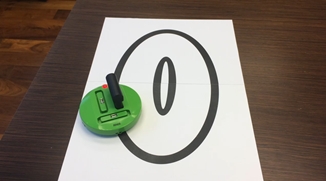 |
| The USB module connects as a network server a logger sensor or a chain of logger sensors to the computer. Get started by hooking it up with a USB to Mini USB cable (cable included!) to the computer (PC, Mac or Linux), attach the sensor or sensors to it and you’re good to go.Read More >> | 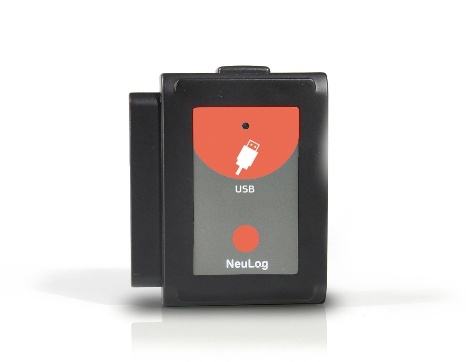 |
| Power up your independent sensor or set of sensors with this 2300 mAh rechargeable battery module for outdoor experiments. Recharge it with a common USB cable (included!).Read More >> | 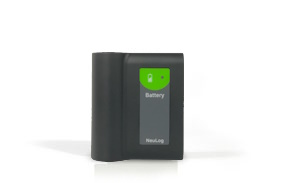 |
| The 3 in one module,connects as a network server a logger sensor or a chain of logger sensors to any computer platform – with USB cable (cable included!) to PC, Mac or Linux) or Bluetooth wirelessly to a tablet or to a smartphone. It can be used also as 2300 mAh rechargeable battery module for outdoor experiments. | 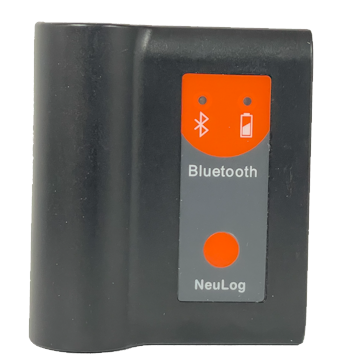 |
| The RF module is half the duo needed for a wireless connection between your PC or Display module, and a chain of sensors. Simply attach one unit to the USB module, and another to a set of independent logger sensors (don’t forget a battery module) and that’s it!Read More >> | 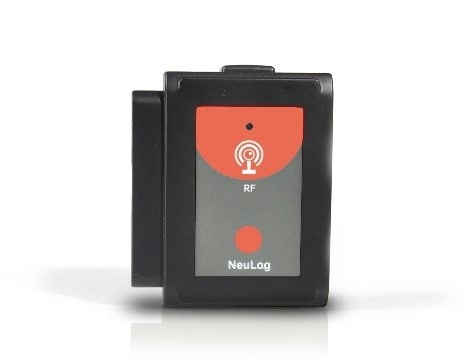 |
| The WiFi module allows any NeuLog sensor to connect to computers, tablets and smart phones via wireless communication. All software comes pre-loaded on the WiFi module and does not require installation. Students simply turn on the WiFi module and it seeks an access point to connect to wireless devices.No installation required, just plug and play The module can be used also as a USB module with USB cable (cable included!). The module needs to be powered by USB adapter or by battery module. Read More >> | 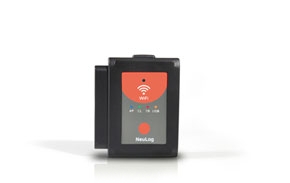 |
| The NeuLog Panda multi-sensor can be used for any science experiment which utilizes Room Temperature, Light, Barometric pressure, Altitude, Sound, Relative Humidity, Dew-Point, Magnetic Field and G-Acceleration readings.Panda is used for environmental data collection and other experiments in Natural Science, Biology, Physics and Chemistry.It is specially designed for primary school level. The multi-sensor comes pre-calibrated so you can start experimentation right out of the box.Read More >> |  |
| What’s an off-line set of logger sensors without the VIEW-200 display module? Simply hook it up to the set and let it do the rest. All you have to do is scroll through the data screens – one for each logger sensor.For the off-line set you need a battery module. Read More >> | 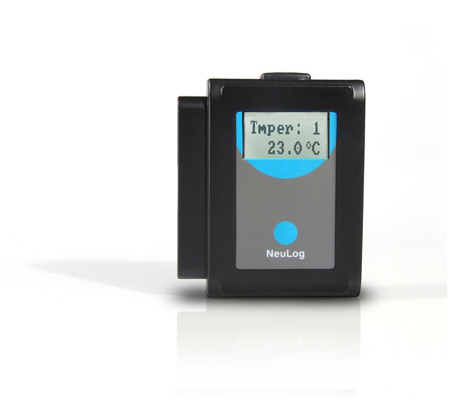 |
| In case you don’t wish to use a PC, you may refer to the VIEW-101 graphic display module. The module’s touch-screen interface along with intuitive and attractive graphics enables you to set up an experiment in a speedy and simple fashion. It displays digitally and graphically the gathered data from up to five different sensors at a time. Read More >> | 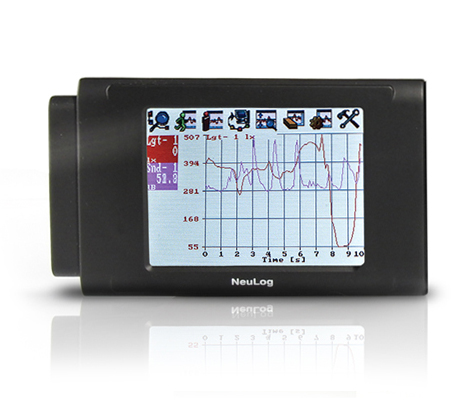 |
| This sensor can easily and accurately measure voltages across various resistive, capacitive and inductive components.The sensor can also measure the voltage of voltaic cells, batteries and power supplies. Voltage can be measured in low or in very high sampling rate (up to 100,000 samples per second). When used in conjunction with the current sensor, the dependence of the current flowing through the applied voltage can be studied in various electric circuits. Read More >> |  |
| Once this module’s 4 mm plugs are connected into an electric circuit, it measures the current through it.Current can be measured in low or in very high sampling rate (up to 100,000 samples per second). Read More >> | 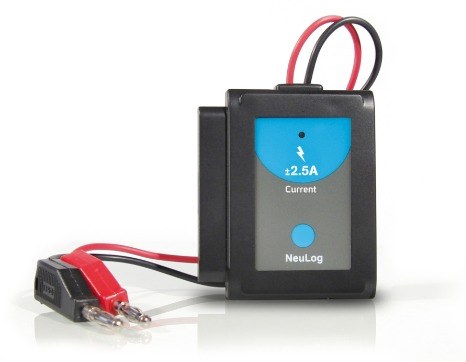 |
| This sensor is used for most disciplines. A biologist could monitor eco-systems, study photosynthesis and enzymes affected by heat or cold, while a chemist could examine exothermic or endothermic reactions. Furthermore, a physicist may use it to examine heat / energy transfer.The sensor can measure in Celsius or Fahrenheit degrees. The probe can be put (not the module) in boiling water or in the freezer. Read More >> |  |
| This logger sensor packs an assortment of uses to meet a variety of necessities; from photosynthesis to light emitting chemicals, from light bulbs properties to photovoltaic cells.Whether in the brilliance of the sunny outdoors or a poorly lit classroom, it measures it all! The sensor’s sophisticated sampling rate modes allows for measuring fast light changes such as AC supply connected light bulbs, as well as the steady emission of sunlight. Read More >> | 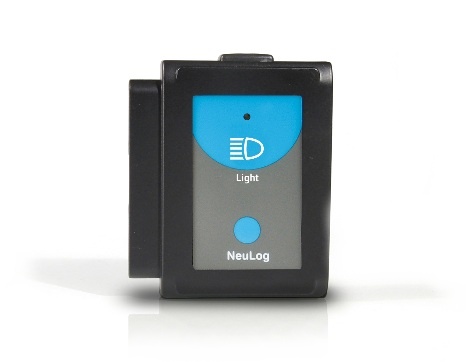 |
| Whether in the air or dissolved in water, this module can easily and conveniently measure oxygen levels. Useful for measuring oxygen during combustion or oxygen emitting processes such as hydrogen peroxide decomposition.In addition to its free oxygen mode, the logger sensor can also provide data in dissolved-oxygen mode, for instances such as measuring photosynthesis of aquatic plants. The logger sensor is highly efficient both outdoors and inside a classroom lab. Its polarographic (Clark) technology, replaceable membranes, and Delrin® electrodes ensure an intuitive interface combined with easy-maintenance and durability. Sensor zero-offsetting is done by a simple 3 sec. press on the sensor push button. Read More >> | 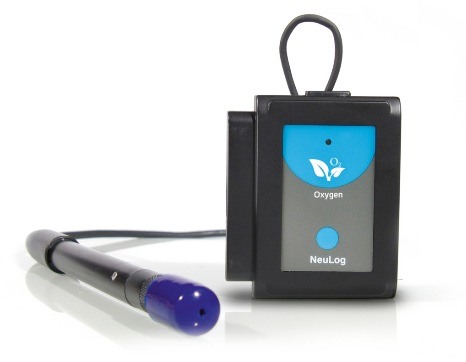 |
| Either in the field or in the classroom, this dependable module provides accurate means of measuring common liquids (such as water, milk, soft drinks, vinegar etc.) for their pH levels, as easily as it measures changing values in titrations or experiments involving antacids.Sensor zero-offsetting is done by inserting it into a pH=7 buffer (or distilled water) and a simple 3 sec. press on the sensor push button. Read More >> | 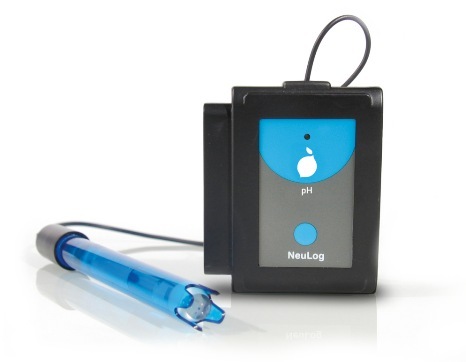 |
| Seemingly a simple box with a hole punctured in it, this sensor offers precise recordings of minute humidity variations.Log relative humidity fluctuations of different weather conditions, and study its effect on tiny organisms such as seedlings or insects. Read More >> | 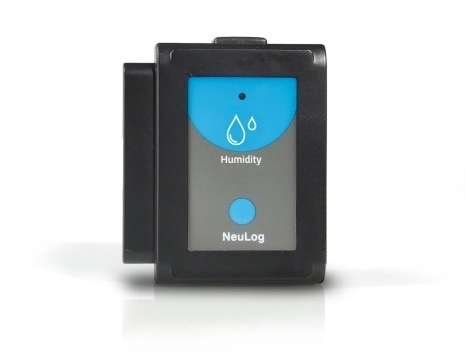 |
| Resembling a medical pulse meter, this logger sensor accurately records and measures heart rates using an infrared LED transmitter/phototransistor receiver.The module’s plethysmograph-based electrodes ensure a dependable reading by attaching them to either finger or ear lobe, and feed accurate values on a bimodal level: either a BPM (beats per minute) or an analog arbitrary value of the measured signal mode. Read More >> | 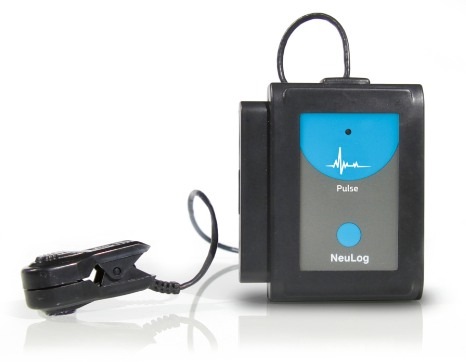 |
This sensor efficiently measures time, velocity or acceleration with one or two photo gates and matching timing cards passing through them.The sensor has six modes of operation:
|
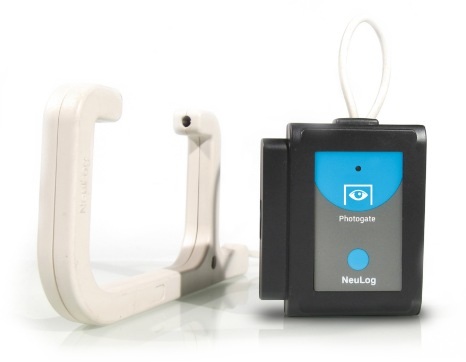 |
| This sensor measures gas pressure can be used to investigate both Boyle’s Law and the Gay-Lussac’s Law for ideal gases and others.Read More >> | 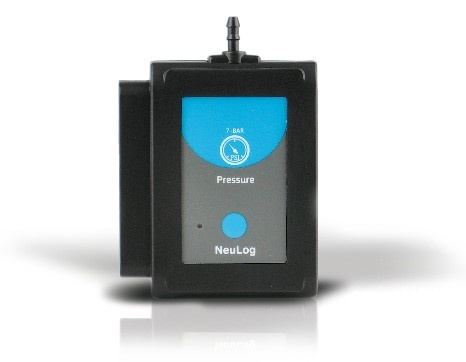 |
| This logger sensor measures push/pull forces and impacts as well as mass to weight relationships.The sensor itself is safely contained with a specially designed hook at the bottom that can be connected to various pulling loads. The sensor’s probe can be hung from a universal laboratory stand. Sensor zeroing is done by a simple 3 sec. press on the sensor push button. Read More >> | 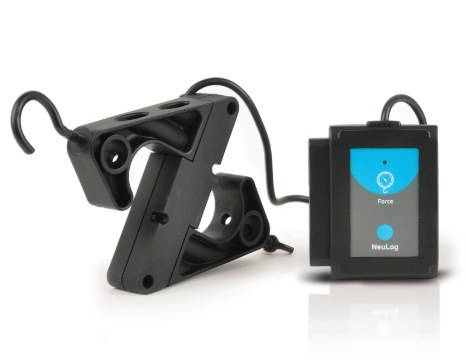 |
| This logger sensor has the impressive ability to measure the very sounds that are all around us in either fast (microphone) or slow (level) modes.The fast mode (up to 100,000 samples per second) displays graphically the sound wave form. You can spectrum analyze the signal with this Neulog function. The slow, and more thorough mode, is able to measure the actual sound pressure level, and display the results in decibels. Add another unit, and you may now determine the velocity of sound propagation in air by timing a pulse travelling between them. Read More >> | 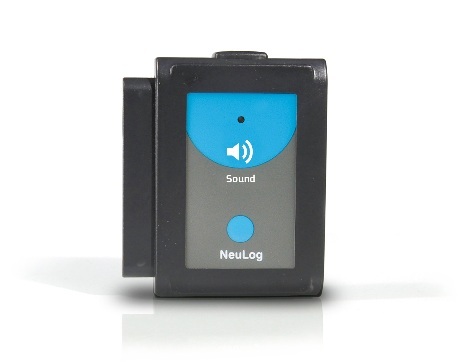 |
| Utilizing a trimodal operation system, this motion logger sensor calculates distance, velocity and acceleration.It effectively operates by transmitting a powerful ultrasonic wave and measuring the time of the echo return. The sensor has 10 meter range and 2 meter range (for having higher sampling rate). Read More >> | 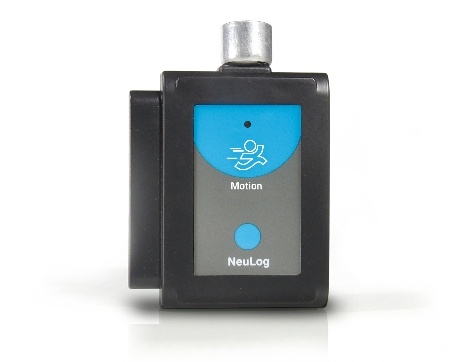 |
| This ultra-sensitive magnetic-field sensor unit is capable of measuring even the lowest levels of magnetic fields, that of planet earth being one of them.This module measures in milli tesla (mT). Read More >> | 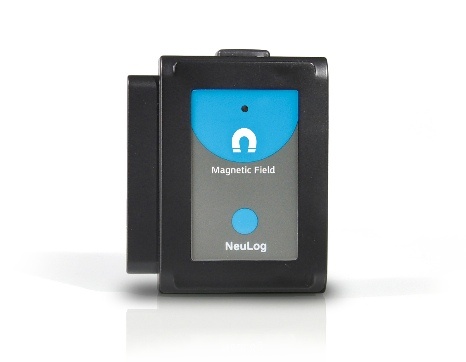 |
| This sensor accurately measures solution electrical conductivity on a tri-range level: micro-siemens per centimeter (µS/cm), milligram per liter (mg/L), and parts per million (ppm).It does so with a state-of-the-art probe with two flat electrodes on a pre-determined surface, allowing the analysis of the signal behavior. The probe includes temperature transducer for temperature compensation. Read More >> | 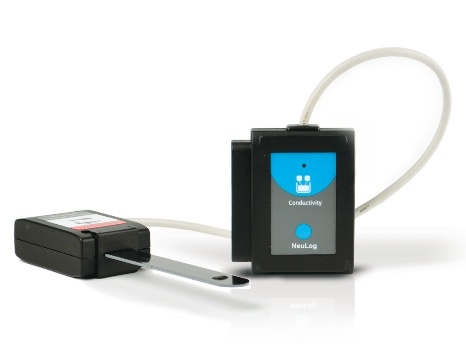 |
| This smart sensor is a user-friendly meter that can calculate the volume of the test subject’s lung by measuring the air flow that passes through its double-ported tube-shaped sensor.The calculation is done on a sophisticated software level and the results are displayed in liters. Note: Disposable laminated papers are included with the sensor. A paper must be rolled and put in the tube before using it and exhaling through it. Read More >> | 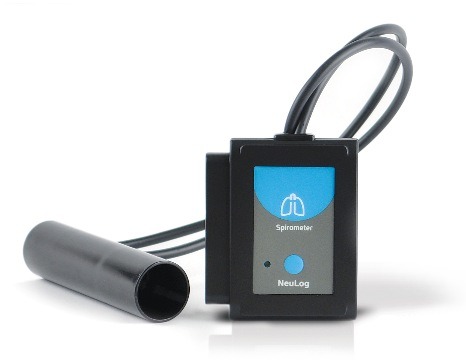 |
| The tiniest emotional ripples we unconsciously experience affect our skin’s conductivity. It is exactly these changes that the Galvanic Skin Response (GSR) sensor measures.A sudden noise, curious smell, touch, pain or sounds are just some of the things that trigger those conductivity changing emotions. The module is used successfully as a biofeedback system. Unlike most biofeedback devices, this unit operates with non-disposable electrodes. Read More >> | 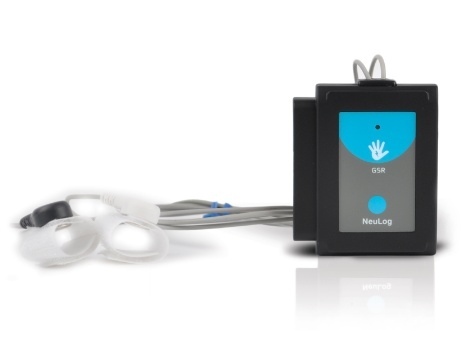 |
| Similar in its use to a regular medical ECG (electrocardiogram), this is a rather simple three lead-based logger sensor.It presents a heartbeat graph that allows a thorough examination of the heart’s electrical activity from three different angles. Unlike most ECG devices, this unit operates with non-disposable electrodes. Read More >> | 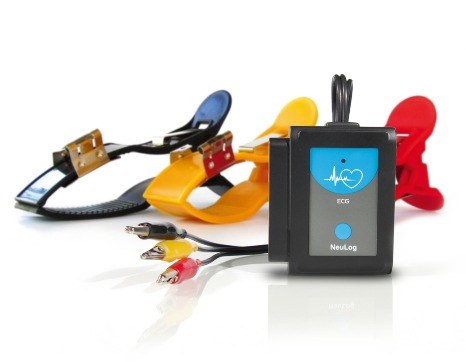 |
| This module determines the red, orange, green, and blue color components of any given solution by measuring color frequency.Simply turn it on and it will send four colored lights through it. The amount of each beam that passes is recorded and processed. This sensor offers a twofold color analysis and value display: absorption and transparency. Read More >> | 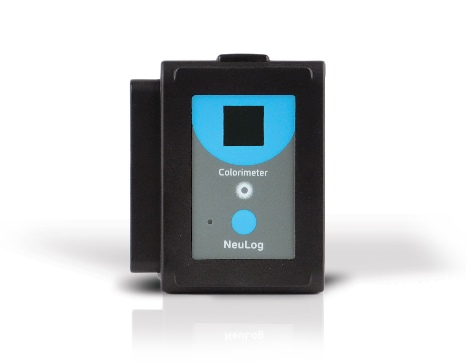 |
| This sensor measures voltage created by a self-generated electromechanical reaction between the sensor and carbon dioxide (CO2) gas in the very air around it.The results are displayed in ppm (parts of CO2 per million of air). Read More >> | 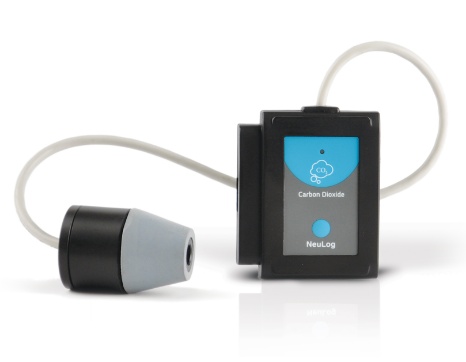 |
| This sensor was carefully designed to measure barometric pressure, from sea level to mountain top. The displayed results are the full scope of commonly used units. Namely: kPa (kilopascal), atm (atmospheres), in Hg (inches of mercury), mm Hg (millimeters of mercury)The sensor has also the range of meters (for altitude) by converting the barometric pressure to altitude. Read More >> | 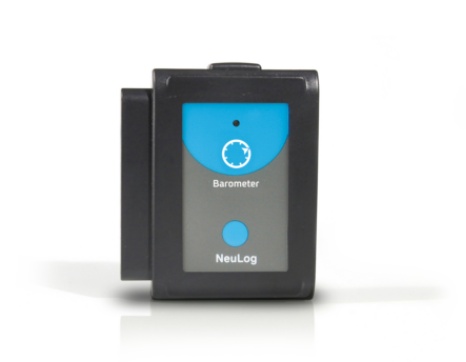 |
| This sensor is very similar to any advanced digital blood pressure meter found in the modern medical arena.Simply slip the cuff onto your test subject’s arm. The testing procedure shows what are the measured signals and how blood pressure data is extracted: systolic blood pressure, diastolic blood pressure, mean arterial pressure and heart rate. Read More >> | 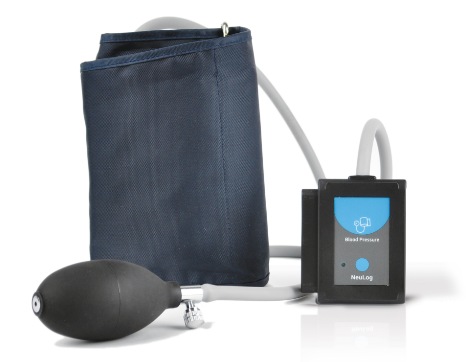 |
| This module automatically and accurately does the simple, yet tedious function of counting drops and bubbles.Perfect for titrations combined with the pH logger sensor. Read More >> | 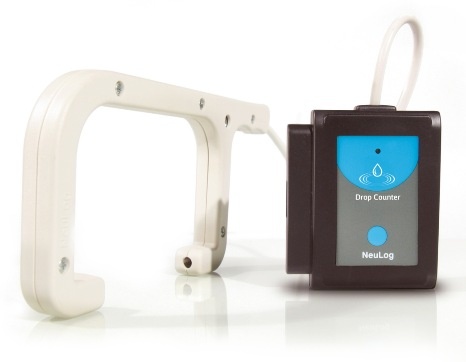 |
| This sensor allows for a stream of water to flow through its inlet and outlet pipes, thus revolving a rotation wheel within it.The wheel is not connected mechanically to anything else, but rather floats on a bearing for minimum friction and the enhancement of its minute accuracy. The measuring is done by monitoring changes in the sensor’s surrounding magnetic field. Read More >> | 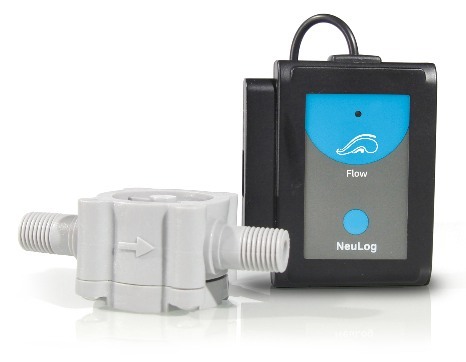 |
| This module is in fact a weight scale designed for a multi range of purposes. Simply lay a heavy weight on its surface, or activate a forceful pressure against it, and the logger sensor will measure it.Read More >> | 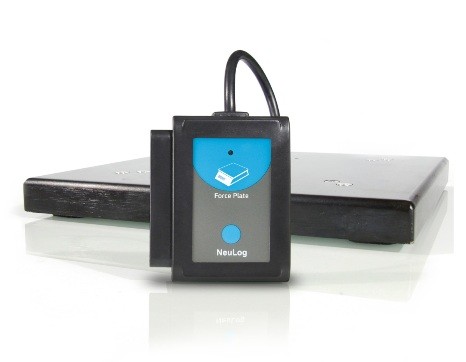 |
| This sensor’s smooth running pulley measures angles, rotations, rotation velocity and acceleration: rev/s, rad/s2, rad/s.Read More >> | 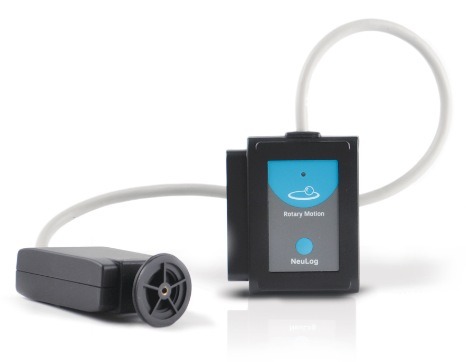 |
| This sophisticated unit measures acceleration on a three-dimensional level. And although each is displayed separately, it supplies a full overview of the desired values.The logger sensor measures all the three accelerations at the same time and stores it. We can run an experiment on-line, upload one dimension acceleration, freeze it and upload another, using the off-line method. Read More >> | 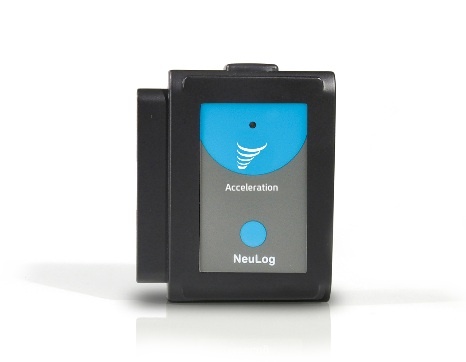 |
| This sensor detects and measures salt content in a solution in three different ranges: %, ppm, mg/L.Read More >> | 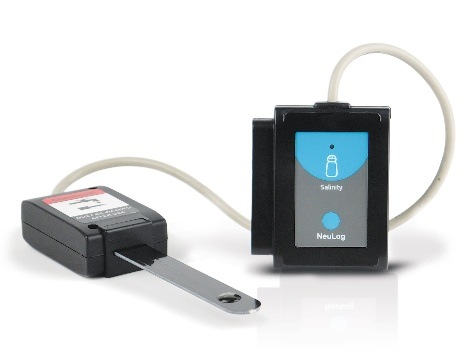 |
| This clever and innovative module measures soil moisture by inserting a ceramic tipped, water filled tensiometer into the soil and measuring the resulting partial vacuum pressure.If the soil is dry, water will be pulled out in through the ceramic holes, thus increasing the vacuum. The vacuum level is rated and logged, reflecting directly on the soil’s moisture levels. Read More >> | 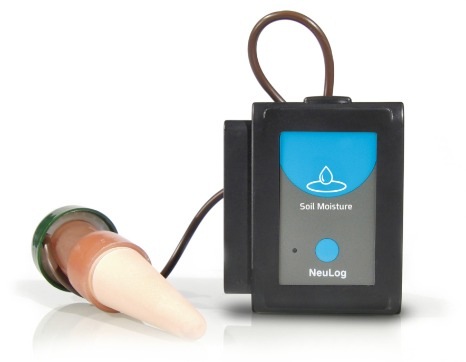 |
| Skin cancer, cataract, immune suppression and vitamin generation in the human body, are just some of the things affected by UVB radiation.The UVB logger sensor accurately measures the wave length of UV light, which is 280-320 nm (2% of the total UV radiation). The light intensity rates are displayed in mW/m2 (milliwatt per square meter). Read More >> | 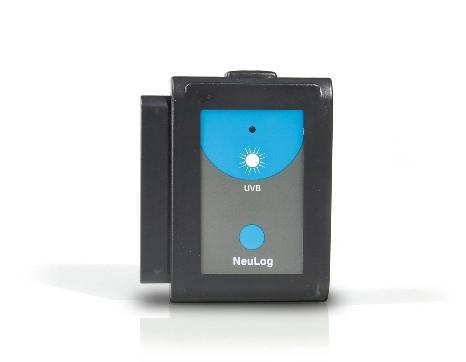 |
| This sensitive sensor projects and measures light that runs through its solution containing tube.As the solution’s turbidity level is higher, so are the amount/intensiveness light levels. The turbidity measurement units are Nephelometric Turbidity Unit (NTU). Read More >> | 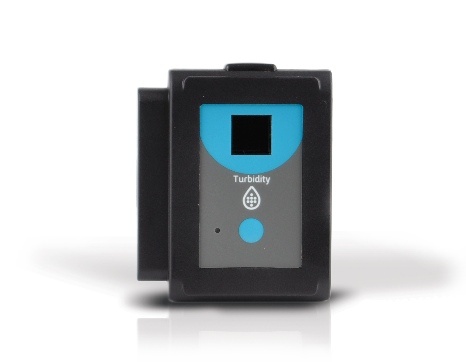 |
| Photoaging and photochemical smog, are just some of the things affected by UVA radiation.The UVA logger sensor accurately measures the wave length of UVA, which is 320-370 nm (98% of the total UV radiation). The light intensity rates are displayed in mW/m2 (milliwatt per square meter). Read More >> | 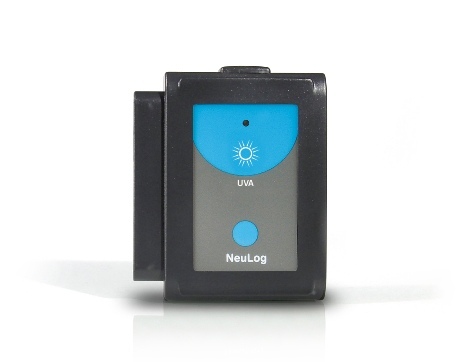 |
| This sensor measures surface temperature.This module has the capability of measuring the temperature (in either Celsius or Fahrenheit) of any surface. Read More >> | 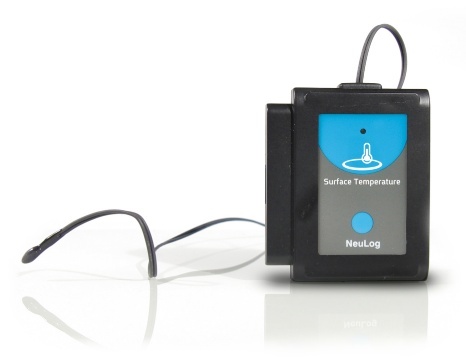 |
| This hardcore sensor is capable of measuring temperature in extreme heat conditions.From extremely low temperature to as high as that of a flame, the module’s thermocouple sensor measures them all, and displays the results in both Celsius and Fahrenheit. Read More >> |  |
| This logger sensor measures temperature remotely using an infra-red high accurate sensor.It is very useful when access to the sample is either difficult or dangerous. Read More >> |  |
| This sensor comes with a belt and measures the air pressure in it. The pressure changes according to the breathing of the subject.From the measured values, the respiration rate can be calculated. Read More >> | 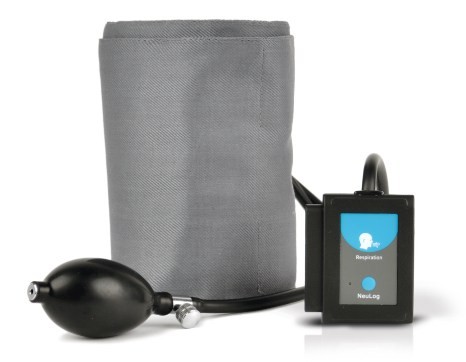 |
| This sensor comes with a hand-held unit with a built-in strain gauge.It measures the pressing force on the hand-held unit. Read More >> | 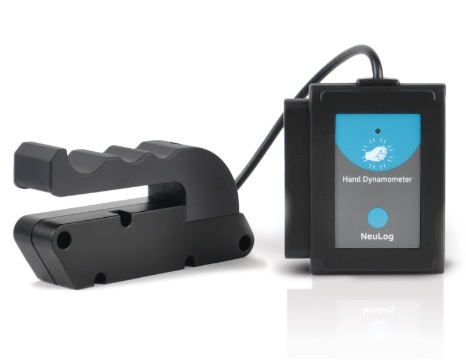 |
| The NeuLog GPS position logger sensor determines its latitude, longitude, altitude and horizontal velocity anywhere on earth through signals received from the Global Positioning System.It can be used by itself or together with other NeuLog sensors to perform outdoor experiments in environmental science, physics and more. A special function creates data for Google map describing the sensors’ values in trail locations. Read More >> | 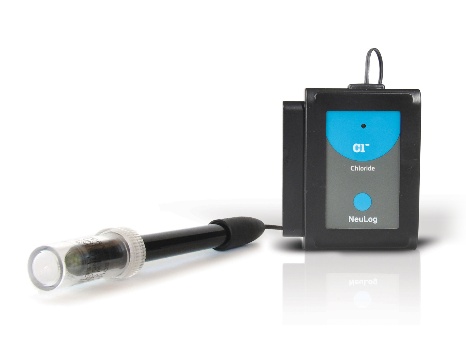 |
| The NeuLog ammonium sensor can be used to measure the concentration of ammonium ions (NH4+) in aqueous samples.It can be used to evaluate the degree of contamination of water due to the use of fertilizers. Ammonium measurements can also be very relevant to study the nitrogen cycle in general and to relate this cycle to plants and algae. This sensor must be used together with NUL-206 pH logger sensor. Read More >> | 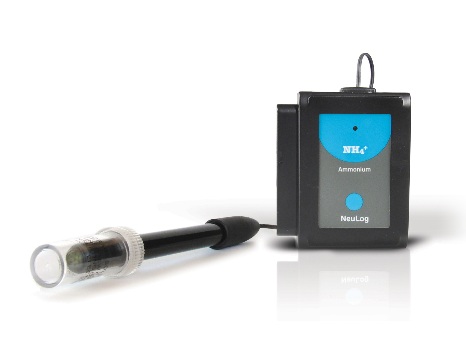 |
| The NeuLog nitrate sensor can be used to measure the concentration of nitrate ions (NO3–) in aqueous samples.Nitrates are used in fertilizers and can contaminate water. Also, untreated human sewage can be a source of nitrate contamination. Nitrate measurements can also be very relevant to study the nitrogen cycle in general and to relate this cycle to plants and algae. This sensor must be used together with NUL-206 pH logger sensor. Read More >> | 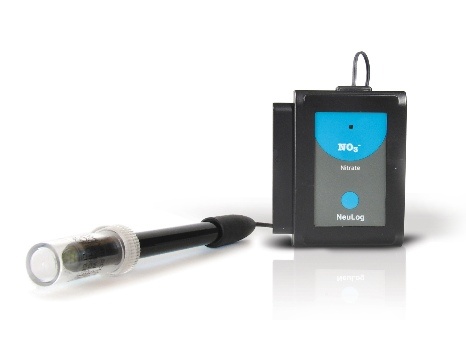 |
| The NeuLog anemometer sensor enables measurements of wind velocity.Combined with temperature, relative humidity, dew point and barometric pressure sensors, it can be used to make very interesting weather measurements. Read More >> | 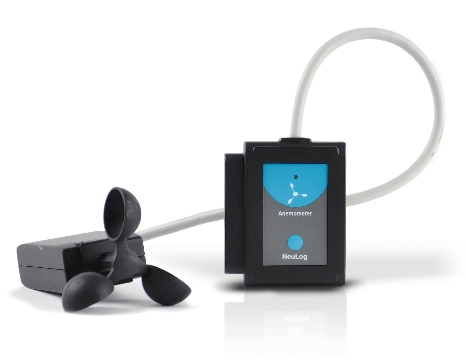 |
| The NeuLog GPS position logger sensor determines its latitude, longitude, altitude and horizontal velocity anywhere on earth through signals received from the Global Positioning System.It can be used by itself or together with other NeuLog sensors to perform outdoor experiments in environmental science, physics and more. A special function creates data for Google map describing the sensors’ values in trail locations. Read More >> |  |
| This sensor measures temperature and humidity and gives the temperature below which the water vapor in that volume of air (at a constant barometric pressure) condenses into liquid water (the dew point).Read More >> | 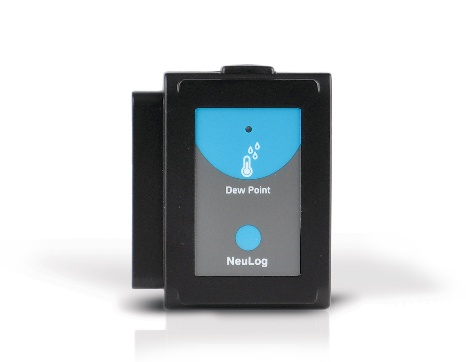 |
| This sensor measures electrostatic charges. Can be used to explore the nature of static charge, to measure both charge and voltage, to measure charge by induction, quantify the charge on a capacitor or discover the charge distribution on a conducting sphere.Read More >> | 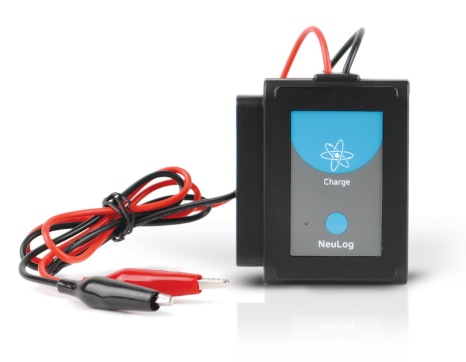 |
| The most common types of radiation are alpha, beta and gamma.The NeuLog Geiger sensor measures all three types of radiation. The radioactivity of a sample can be measured by counting how many ionizing events occurred in a period of time or as rate (counts per second, for example). Possible experiments that can be performed are: Radioactivity and distance, Lifetime measurements, Biological radioactive markers, measuring half-lives, Radiation shielding, etc. Read More >> | 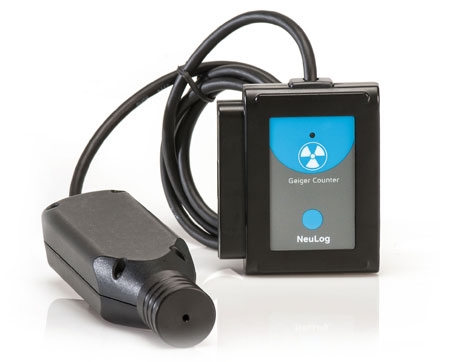 |
| This sensor can be used to measure the current in the mA range.Once this module’s 4 mm plugs are connected into an electric circuit, it measures the current through it. Current can be measured in low or in very high sampling rate (up to 100,000 samples per second). Read More >> | 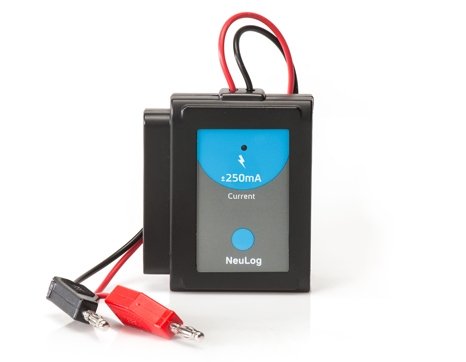 |
| The sensor measures the current through the resistance and the voltage on it, its output is a resistance value.Using ohm’s law (R = V/I) the resistance is calculated from the current and voltage values. Read More >> | 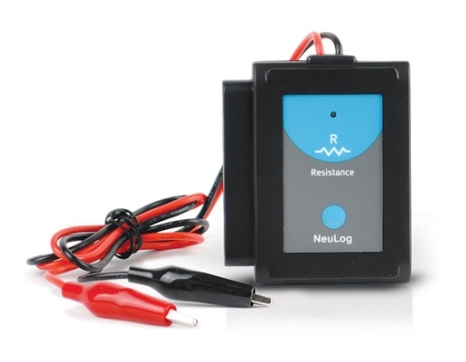 |
|
|
|
||
|